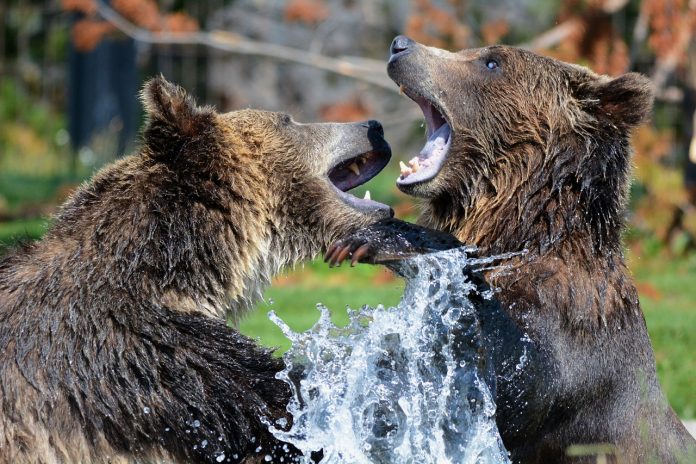By Randy Bracht
(The Center Square) – Citing concerns voiced by constituents in central Washington, U.S. Rep. Dan Newhouse, R-Wash., on Wednesday introduced legislation intended to prevent two federal agencies from proceeding on a proposal to reintroduce grizzly bears into the North Cascades region.
Newhouse, who represents the state’s 4th Congressional District, said his bill would require the National Park Service and the U.S. Fish and Wildlife Service to withdraw a proposed mitigation rule and draft environmental impact statement on the grizzly bear restoration plan.
“Central Washingtonians have consistently voiced their concerns and opposition over the introduction of grizzly bears into the North Cascades ecosystem, yet unelected bureaucrats … continue to try to force these predators upon our communities,” Newhouse said.
“These agencies should listen to the people who would be most impacted by these actions and immediately withdraw their proposed rule and draft EIS statement so members of the region can rest safely knowing that an 800-pound apex predator is not going to enter into their backyard,” said the congressman, who called them a “non-essential experimental population.”
The legislative future of Newhouse’s bill is uncertain. To be enacted, it would have to clear both the House and Senate and be signed by President Joe Biden.
Proposals by the National Parks Service and the U.S. Fish and Wildlife Service to reintroduce grizzly bears have fluctuated over the past decade. There was initial impetus under the Obama administration, then shelved under the Trump administration, and now returning under the Biden administration. The proposals have been supported by some environmental interests but opposed by many area residents.
In 2018, the House of Representatives did approve legislation containing an amendment by Newhouse to deny funding for transporting grizzlies into the North Cascades. In October 2019, hundreds of people turned out for a public listening session requested by Newhouse and held at the Okanogan County Fairgrounds with a representative from the U.S. Department of Interior. At the time, said Newhouse, 50 people spoke in opposition to grizzly bear introduction and 12 people supported it. In 2020, the Department of Interior concluded that grizzly bears would not be released into the North Cascades ecosystem.
But last November, U.S. Fish and Wildlife and the Park Service announced the start of an EIS process to again consider restoring grizzlies in the region. Last month, the two federal agencies announced a public comment process on the draft EIS which evaluates options plus a proposed management rule under the Endangered Species Act.
“We are looking for the public’s help in selecting the best path forward as we evaluate grizzly bear recovery on these federal lands,” Don Striker, superintendent of North Cascades National Park, said last month.
The designated ecosystem includes North Cascades National Park and portions of the Mount Baker-Snoqualmie, Wenatchee, and Okanogan National Forests. Elsewhere, a small population of grizzlies has been observed in the very northeast portion of Washington state, northern Idaho, and their adjacent Canadian borders.
Federal officials say grizzly bears occupied the North Cascades for thousands of years until they were hunted into extinction by humans over the last century. The last confirmed sighting of one of the omnivorous animals in Washington’s North Cascades was in 1996. Proponents of their reintroduction say the bears can be an essential part of the ecosystem, distributing native seed plants and keeping other wildlife populations in balance.
The draft impact statement outlines three alternatives: no action and two which call for re-introducing the bears, but differing in how their populations might be managed. One of the alternatives would designate grizzlies as an “experimental population” under the federal Endangered Species Act, or ESA. According to the feds, that would provide more safety, security, and options in managing the bears, including deterrence, relocation, or removal of animals involved in conflicts.
Fish and Wildlife is separately seeking public input on a proposed “10(j) rule” to the ESA that could restore “our natural heritage” in a way that “ensures communities, property, and animals can all coexist peacefully,” said USFWS regional director Hugh Morrison.
Most of the grizzly bears in the continental United States are located in western Montana and Wyoming. The animals tend to be solitary but on occasion have attacked and killed humans and can prey on livestock.
For EIS information, including public meetings, visit https://parkplanning.nps.gov/NCEGrizzly.
Proposed 10(j) rule is posted at regulations.gov under Docket No. FWS–R1–ES–2023–0074.
To read more about the reintroduction of predatory species like wolves, click here.
To read more about Washington’s wildlife management problems, click here.


























